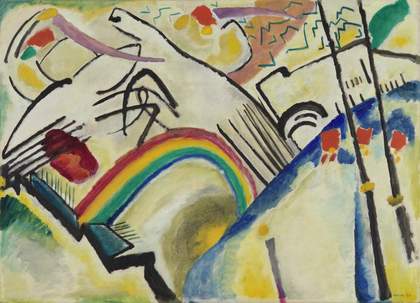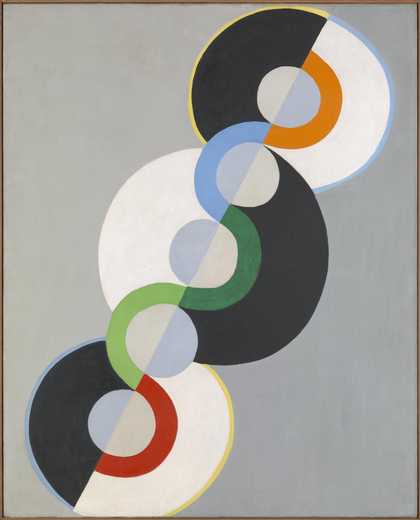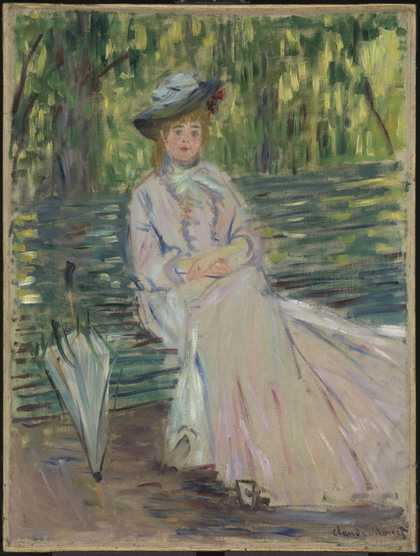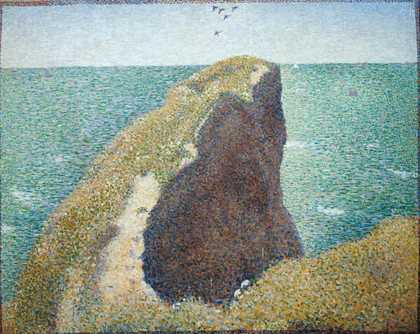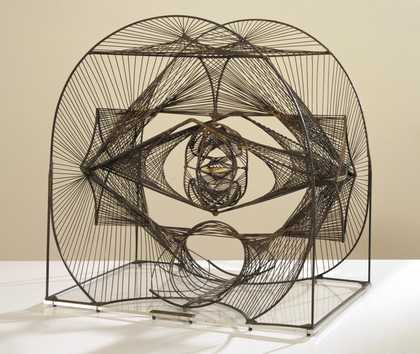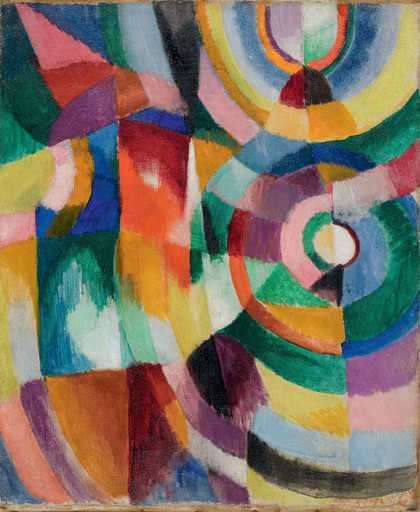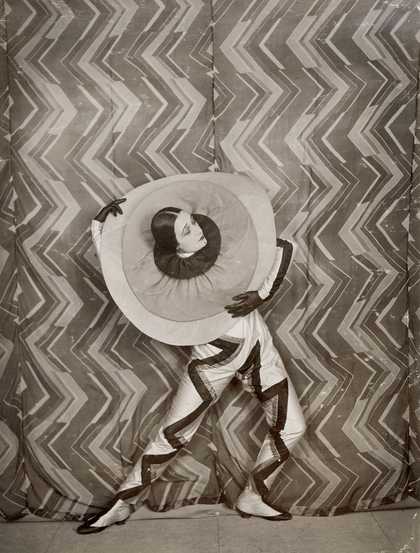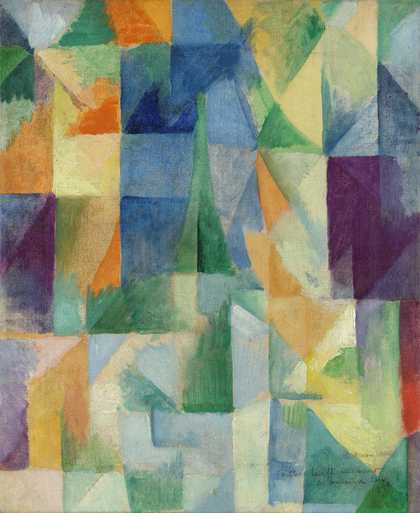The term simultanism is derived from the theories of Michel Eugène Chevreul whose book of colour theory De la loi du contraste simultanée des couleurs (On the law of the simultaneous contrast of colours) was published in Paris in 1839. Chevreul identified the phenomenon of colours looking different depending on the colours around them. His ideas had an increasing impact on French painters from then on, particularly the impressionists and post-Impressionists generally, and especially the neo-Impressionists.
The Delaunays’ paintings consisted of interlocking or overlapping patches, or planes, of contrasting (or complementary) colours. In Chevreul’s theory, and in reality, contrasting colours brought together (i.e. simultaneous) enhance each other, giving the painting greater intensity and vibrance of colour.
The Delaunays’ compositions were initially derived from architecture, (for example in Robert Delaunay’s Windows series), but by 1912 he had begun to make paintings in totally abstract circular formats (Disques and Formes circulaires cosmiques series) aiming to create rhythm, motion and depth through overlapping patches of vibrant hues. These compositions were still ultimately based on nature however, and in 1912 Delaunay wrote: ‘Direct observation of the luminous essence of nature is for me indispensable’.
Their work was also named orphism by the poet and critic Apollinaire.

